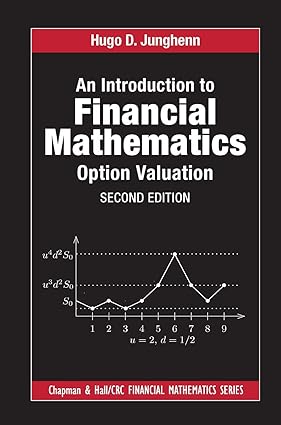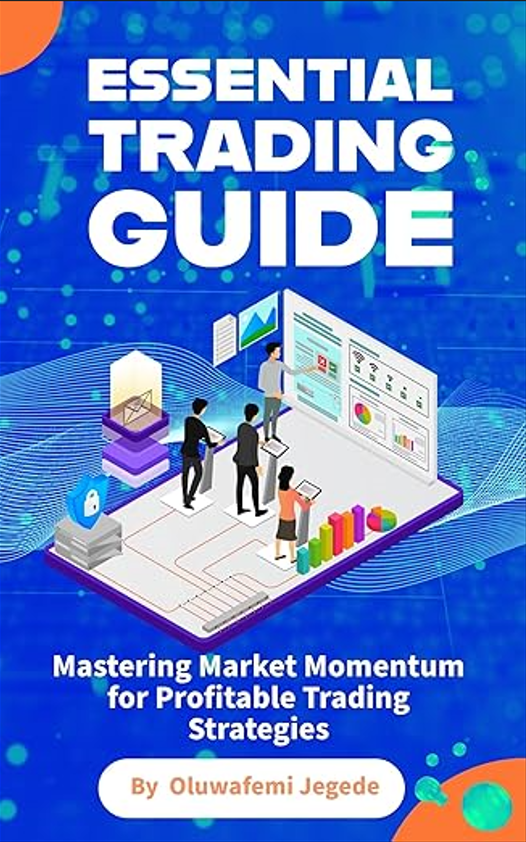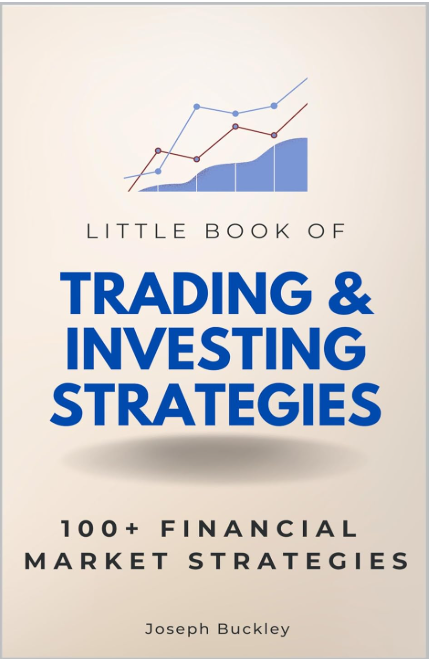Introduction
Ever wondered how Wall Street pros assign value to an option or why financial models like Black-Scholes still dominate the markets? If you’ve dabbled in trading or investment banking, you’ve likely encountered the cryptic world of option pricing. And if you’re serious about understanding it beyond buzzwords, then An Introduction to Financial Mathematics: Option Valuation by Hugo D. Junghenn is your golden ticket.
This book doesn’t just skim the surface—it takes you by the hand and guides you through the math that fuels modern finance. Whether you’re a math enthusiast, a finance student, or a trader looking to level up your game, this book belongs on your desk.
👉 Grab your copy now on Amazon and start decoding the math behind financial markets!
💡 Why Financial Mathematics Matters More Than Ever
We live in a world driven by complex derivatives, algorithmic trading, and data-driven investing. Understanding the math behind finance isn’t just a bonus—it’s becoming a necessity. Whether you’re pricing options, managing risk, or evaluating investment strategies, mathematical models are the engines behind those decisions.
Hugo D. Junghenn’s book makes this complex field accessible without watering it down. He strikes a perfect balance between academic rigor and practical relevance.
📘 About the Book: What Makes It Special?
An Introduction to Financial Mathematics: Option Valuation is not your average textbook. Here’s what sets it apart:
- Clear Explanations – The author uses simplified examples to explain difficult concepts like arbitrage pricing, stochastic processes, and Brownian motion.
- Mathematical Precision – You’ll find rigorous definitions, step-by-step derivations, and real-world applications.
- Bridges Theory and Practice – The book walks through famous models like Black-Scholes, binomial trees, and risk-neutral valuation from the ground up.
🔗 Want to dive deeper? Check out the book here: https://amzn.to/45jfXJV
🔍 Key Topics Covered in the Book
Let’s unpack some of the major themes and sections covered in the book that make it a go-to resource for aspiring quants and finance geeks:
1. Time Value of Money
The concept of discounting future cash flows is foundational in finance. The book lays the groundwork by walking you through how money’s value changes over time, leading to the discount factor that underpins modern valuation techniques.
2. Arbitrage and No-Arbitrage Pricing
The author shows how arbitrage—the practice of profiting from price imbalances—sets the stage for pricing derivatives. If there’s no free lunch, then prices must obey specific mathematical rules. Junghenn explains how no-arbitrage principles form the backbone of financial models.
3. Binomial Model of Option Pricing
Before you reach the sophisticated Black-Scholes model, you’ll get a crystal-clear understanding of binomial trees. This section breaks down how options are valued step-by-step over discrete time periods—ideal for beginners.
4. Brownian Motion and Stochastic Calculus
This is where it gets technical. The book doesn’t shy away from introducing Brownian motion, Ito’s Lemma, and stochastic differential equations—all essential for understanding real-world option pricing models.
Junghenn explains these concepts intuitively before diving into their applications, making it easier to follow along even if you don’t have an advanced math degree.
5. The Black-Scholes Model
The crown jewel of the book. Here, you’ll explore:
- How the Black-Scholes equation is derived
- What assumptions underlie the model
- How to apply it to call and put options
- Sensitivity measures like the Greeks (Delta, Gamma, Theta, Vega, Rho)
Want to explore the full theory in-depth? 👉 Click here to get the book
🧠 Who Should Read This Book?
This isn’t a book for those looking for shortcuts. If you’re serious about learning the real math behind options and derivatives, this book is your jam.
It’s ideal for:
- Finance students who want a deeper mathematical grounding
- Traders and analysts seeking to understand what goes into the models they use daily
- Math lovers curious about applying calculus, probability, and differential equations in a real-world context
- Quant wannabes prepping for finance careers at hedge funds, investment banks, or fintech startups
Even if you’re not from a financial background, the book’s structured approach makes it surprisingly digestible.
✍️ Writing Style: Academic but Friendly
Junghenn is a mathematician first, but he writes like a teacher who wants you to learn. The book doesn’t assume you’re an expert, and every equation is backed up with explanation and logic. It’s like being in a private math class with someone who really cares that you get it.
That said, expect to be challenged—it’s not spoon-fed. But if you’re up for it, the payoff is real.
🛠️ How This Book Can Transform Your Understanding of Finance
You won’t just memorize formulas. You’ll understand where they come from and why they work. And that makes all the difference.
Here’s what you can expect after reading this book:
✔️ You’ll be able to derive and manipulate the Black-Scholes equation
✔️ You’ll understand how randomness and probability drive asset prices
✔️ You’ll confidently build option pricing models from scratch
✔️ You’ll be able to explain the logic behind models used by top banks and trading firms
Ready to take your learning to the next level? 👉 Get the book here
💬 Real Reader Reviews
⭐️⭐️⭐️⭐️⭐️ “This book taught me more in two weeks than an entire semester of financial engineering lectures.”
– Graduate Student, New York
⭐️⭐️⭐️⭐️⭐️ “I finally understand the math behind options pricing. Junghenn breaks it down brilliantly.”
– Junior Analyst, London
⭐️⭐️⭐️⭐️⭐️ “Clear, concise, and surprisingly readable for such a technical subject.”
– Self-Taught Quant, Mumbai
💼 Use Cases: Where You’ll Apply This Knowledge
Still wondering if it’s worth it? Here’s where the book’s lessons pay off:
- Valuing Options in equity, forex, and commodities
- Creating risk models for hedge fund strategies
- Interview prep for finance roles (quant, risk, trading)
- Academic research in mathematical finance
- Algorithmic trading development and strategy backtesting
And honestly, it’s just satisfying to finally get how financial math works under the hood.
🔗 Final Thoughts: Is It Worth It?
Absolutely. If you’re someone who wants to not just use models, but truly understand them, this is the book you need. It’s rigorous yet readable, challenging yet rewarding.
In a market flooded with surface-level content, Hugo D. Junghenn’s An Introduction to Financial Mathematics: Option Valuation stands tall as a serious learning tool for serious minds.
📘 Ready to master the math behind the markets?
👉 Order your copy today and start building the skills that separate professionals from pretenders.
📎 Explore More Like This
Want more trading, investing, and finance book breakdowns like this one?
🔗 Visit our hub: BookBriefsHub – where knowledge meets profit.
Related Posts You Might Like:
- Master the Market with Scalping: Top 5 Trading Strategies from Andrew C. Ellis
- High Probability Trading Strategies by Robert C. Miner
- Way of the Turtle: The Secret Methods That Turned Ordinary People Into Legendary Traders
Turn Any Idea into Viral,
Jaw-Dropping AI Videos in Seconds!

“Start Your Website Journey Today – Exclusive Hostinger Discounts!”







